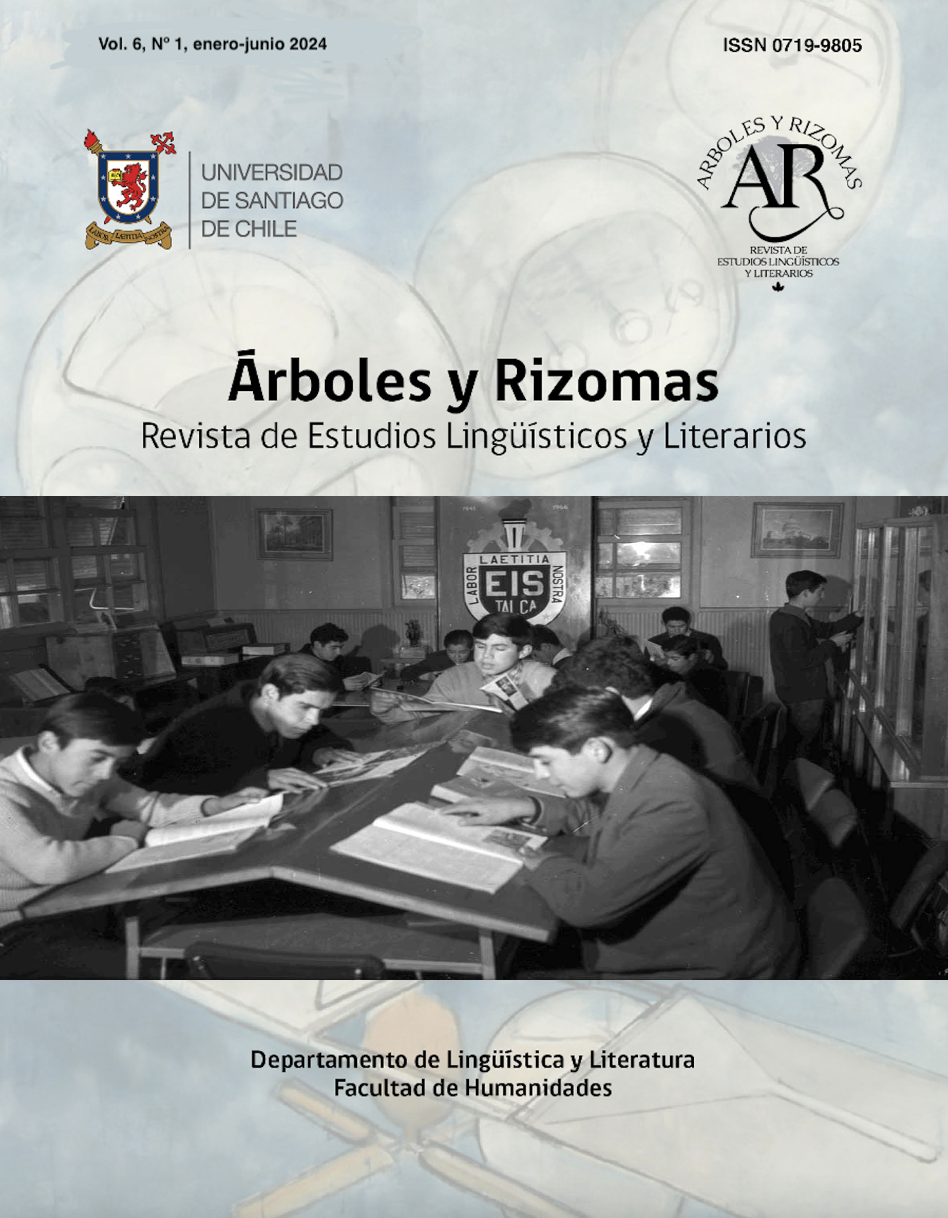Children's identity perceptions and literary mediation. A study from the APPRAISAL System and DBM®
DOI:
https://doi.org/10.35588/ayr.v6i1.6743Keywords:
self-representation, Appraisal System, children's identity, Mauricio Paredes, literary mediation, D.B.M.®Abstract
This research explores the discursive construction of identity meanings based on the valuative perception of the self, in pedagogical moments of interaction with the literary text ¡Ay, cuanto me quiero! (Paredes, 2003). The study is framed in the qualitative paradigm and analyzes cases of eight- to nine-year-old infants, according to the APPRAISAL System. The study is set in the framework of Systemic Functional Linguistics (SFL) and Developmental Behavioural Modelling (DBM)®. The results show the possibilities of the literary communication process to strengthen in the middle childhood period, in accordance with the structuring of cognitive representations, the shaping of personal identity and the understanding of senses of reality. Evidence shows that, from a mediation process the story and under a strategy of reflection on identities, the infants evidence discourses of self-representation centered on the characterization of their personal developments in interactive social spaces. However, only a simple collective self-representation is manifested, at the level of peers and/or family, without generating collective identity discourses located in larger and more complex groups that are mobilized from a cultural, national, or Latin American identification.
Downloads
References
Berger, P. & Lukmann, T. (2001). La construcción social de la realidad. Amorrortu editores.
Carrasco, I. (2005). Literatura chilena: canonización e identidades’. Estudios Filológicos, 40, 29-48.http://dx.doi.org/10.4067/S0071-17132005000100002
Carrasco, I. (2009). Ambivalencia identitaria en la literatura chilena. En A. Nordenflycht & D. Döll (Eds.), Ciudades (in)ciertas. La ciudad y los imaginarios locales en las literaturas latinoamericanas. Puerto de Escape.
Colomer, T. (2005). Andar entre libros. La lectura literaria en la escuela. Fondo de Cultura Económica.
Culler, J. (2000). Breve introducción a la teoría literaria. Crítica.
Cantón, J., Cortés, R. & Catón, D. (2011). Desarrollo socioafectivo y de la personalidad. Alianza.
Eco, U. (1995). Tratado de Semiótica General. Lumen.
Elizalde, P. (2019). Mauricio Paredes: Escribir es la mejor manera de ordenar los pensamientos. Revista Educar.
Erikson, E. (2000). El ciclo vital completado. Paidós Goldin.
García-González, M. (2021). Enseñando a sentir. Repertorios éticos en la ficción infantil. Metales Pesados.
Guiñez, M. & Martínez, E. (2015). Mediación lectora y primera infancia: Construcción de sentidos subjetivos e identitarios. Estudio de caso en niños de 3° y 4° de educación básica del Colegio Adventista de Valdivia. Estudios Pedagógicos, 41(Número Especial), 115-134. http://dx.doi.org/10.4067/S0718-07052015000300008
Ghio, E. & Fernández, M. (2008). Lingüística Sistémico Funcional. Aplicaciones a la Lengua Española. Waldhuter.
Halliday, M. (1994). An Introduction to Functional Grammar. Arnold.
Halliday, M. & Matthiessen, C. (2014). An Introduction to Functional Grammar. Edward Arnold.
Hernández, R., Fernández, C. & Baptista, M. (2017). Metodología de la Investigación. 6ª Ed. McGrawhill Educación.
Krotz, E. (2002). La otredad cultural entre utopía y ciencia. Un estudio sobre el origen, el desarrollo y la reorientación de la antropología. Fondo Cultura Económica.
Larraín, J. (2001). Identidad chilena. LOM.
Lecannelier, F. (2009). Apego e Intersubjetividad. LOM.
Lotman, Y. (1970). Estructura del texto artístico. Istmo.
Mansilla, S. (2006). Literatura e identidad cultural. Estudios Filológicos, 41, 131-143. http://dx.doi.org/10.4067/S0071-17132006000100010.
Martin, J. (2008). Tenderness: Realisation and instantiation in a Botswana town. Systemic functional linguistics in use. Odense working papers in language and communication, 29, 30-58.
Martin, J. (2003). Introducction. Text, Special issue. En M. Macken-Horarik & J. R. Martin (Eds.), Negotiating Heteroglosia: Social perspectives on evaluation (pp.171-181). Mouton de Gruyter.
Martin, J. & Rose, D. (2003). Working with Discourse: Meaning beyond the clause. Continuum.
Martin, J. & White, P. (2005). The language of evaluation. Appraisal in English. Palgrave Macmillan.
Martínez, E., Rabanal, D.,Valenzuela, P. & Fernández, C. (2023). Representaciones de género y plan lector en Chile: Estudio del corpus literario para primera infancia. Ocnos, 22(2), 1-16.
Mc Whirter, J. (2005). Behavioral Remodelling. Advancing NLP’s Linguistic Model. En M. Hall & S. Charvet (Eds.), Innovations in NLP (pp.95-114). Crownhouse Publications.
Mignolo, W. (1986). Teoría del texto e interpretación de textos. Universidad Nacional Autónoma de México.
Miras, M. (2001). Afectos, emociones, atribuciones y expectativas: el sentido del aprendizaje escolar. En J. Pallacios, A. Marchesi & C. Coll (Eds.), Desarrollo Psicológico y Educación (pp. 309-329). Alianza.
Oteíza, T. (2007). Percepciones lingüísticas de hablantes bilingües: análisis evaluativo. Estudios Filológicos, 42, 155-173. http://dx.doi.org/10.4067/S0071-17132007000100010
Oteíza, T. (2009). Solidaridad ideológica en el discurso de la historia: tensión entre orientaciones monoglósicas y heteroglósicas. Revista Signos. Estudios de Lingüística, 42(70), 219-244. http://dx.doi.org/10.4067/S0718-09342009000200004
Oteíza, T. (2018). Prácticas de la memoria en clases de historia: construcción de la evidencia multimodal. Discurso y Sociedad, 12 (1), 112-160.
Oteíza, T. & Pinuer, C. (2019). El sistema de VALORACIÓN como herramienta teórico metodológica para el estudio social e ideológico del discurso. Logos: Revista de Lingüística, Filosofía y Literatura, 29(2), 207-229. http://dx.doi.org/10.15443/rl2918
Paredes, M. (2006). ¡Ay cuánto me quiero! Alfaguara.
Petit, M. (2001). Lecturas: del espacio íntimo al espacio público. Fondo de Cultura Económica.
Ramos, C. (2005). Taller del Cuento Coeducativo. Centro del Profesorado de Granada
Shaffer, D. & Kipp, K. (2007). Psicología del desarrollo: de la infancia a la adolescencia. Cengage.
Valenzuela, P. & Ivanova, A. (2020). Identidades culturales en literatura escolar: análisis de un texto escolar en Chile. Altre Modernità, 23, 98-119. https://doi.org/10.13130/2035-7680/13418
White, P. (2003). Beyond modality and hedging: A dialogic view of the language of intersubjective stance. Text & Talk, 23(2), 259-284. https://doi.org/10.1515/text.2003.011
Downloads
Submitted
2024-06-18Published
Issue
Section
License
Copyright (c) 2024 Elizabeth Martínez Palma, Pilar Valenzuela Rettig

This work is licensed under a Creative Commons Attribution 4.0 International License.






